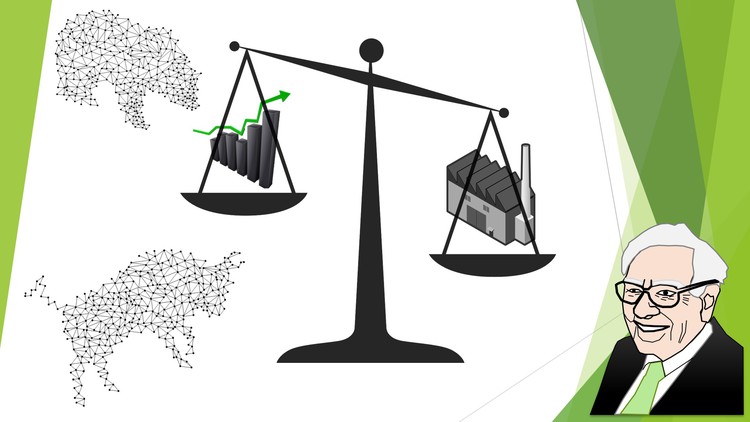
Learn to invest like Warren Buffett: Mindset, Strategy, Dividends, Company Analysis, Intrinsic Value Calculation & more
What you will learn
Value Investing like Warren Buffett and Benjamin Graham
Intrinsic Value Calculation (+Template) and Margin of Safety
Qualitative and Quantitative Company Analysis
Profitability and Stability
Dividend Growth
Investing Approaches and Strategies
Contrary Investing
Functionality of the Economy and Stock Exchange
Assets, Liablities and how to handle money
Mindset of Successful Investirs
Description
!! To offer it for free, we needed to reduce the content below 2 hours and unpublish some chapters temporarily !!
This online course trilogy contains all chapters of “The Value Investing Journey Part 1-3” and is recommended to everyone that wants to become a Value Investor like Warren Buffett.
Part 1:
The presented topics are amongst others the streams of income, financial budgeting, assets and liabilities, the mindset of successful investors, compounded interest, economic knowledge and the functionality of the stock exchange.
Part 2:
The most important topics are the distinction of asset classes, general investing strategies, fundamental investing strategies, value investing, contrary investing, market psychology and the pre-selection process of companies in combination with a criteria overview for qualitative and quantitative analysis.
Part 3:
The presented calculation methods in this online course refer to profitability, stability, dividends, price and valuation levels and explain several concepts to calculate the intrinsic value of a company. With these methods, you will learn how to identify high-quality companies and how to identify undervalued companies. It is especially the combination of those two attributes that usually promises the highest returns for investors.
During the last years, we have experienced that many people don`t know much about the stock market and therefore struggle to start investing. But especially in times of low interest rates, investing is without alternative.
We want to empower you to become an investor by providing financial education!
Value Investing, which was invented by Benjamin Graham, is a stock market investing approach that is based on the fundamental data of a company. With the intrinsic value calculation and the margin of safety, Graham identified companies he could buy for share prices far below their intrinsic value and recieve extraordinary returns.
Warren Buffett adapted this approach from his professor Benjamin Graham and became one of the richest people on our earth. He focuses not only on undervalued companies but also on high-quality companies with a profitable and stable business model over a long period of time. The compounded growth of dividends also became an important aspect when selecting new investments.